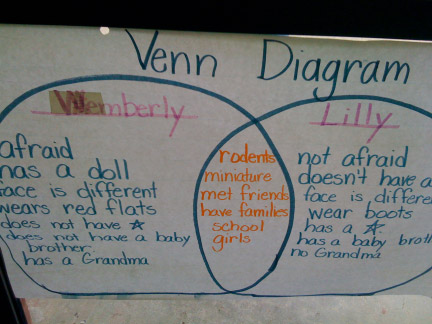Making Comparisons
You might be surprised to know that the thinking process of identifying similarities and differences is one of the most powerful ways to accelerate learning achievement. Research shows that when learners are guided to compare or classify, their achievement level almost doubles!
Comparing is a thinking skill that helps us understand information and procedures on a deeper level. When we compare, we look at the similarities and differences of 2 or more things, ideas, or concepts. This is easily done as you go through your daily routine or when encountering new learnings. Have your child select 2 objects to compare. Here are some compare questions you might pose:
- How do the objects look the same? Different?
- How do the objects feel?
- What are the uses of each object? Can you use them for the same purpose?
- Where would the objects be used?
- When would the objects be used?
- Which object would be best to use if you needed to….(fill in the blank with a task)?
- How were the objects made?
Have the child compare one quality or characteristic at a time for each object being compared.
Here are some ideas of objects to compare:
- Food (vegetables vs. fruits)
- Animals
- Places
- Plants
- Kitchen utensils
- Television shows or cartoons
- Books
- People-real and book characters
- Seasons
- Cars, boats, airplanes
One benefit of making comparisons is the rich vocabulary that is used during the discussions. Encourage your child to be as specific as possible. You may want to keep a comparison journal where your child finds things to compare and records the similarities and differences.
You can use a Venn diagram or a 3-column chart to record the comparisons.
Venn Diagram—This Venn diagram compares 2 favorite book characters.

3 Column Chart
Source: http://www.scholastic.com/teachers/lesson-plan/graphic-organizer-venn-diagram
For further reading, here is an excellent resource I recommend:
Classroom Instruction that Works: Research-Based Strategies for Increasing Student Achievement
